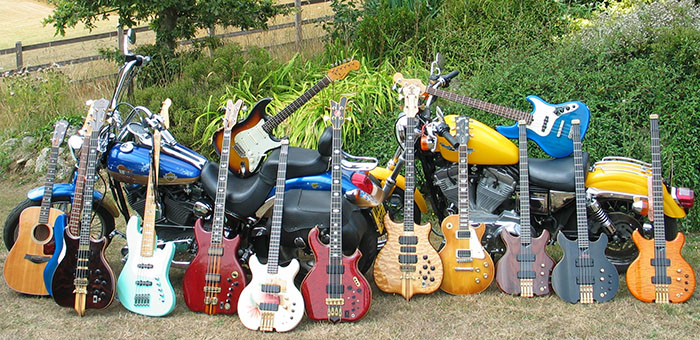 We salute the fallen musicians, producers, promoters, actors, writers and presenters of 2020 and 2021.
We salute the fallen musicians, producers, promoters, actors, writers and presenters of 2020 and 2021.
Janice Long (pictured left – the first woman to have a daytime show on Radio 1, the first female presenter of ‘Top Of The Pops’ and a great supporter of upcoming artists)
Nick Kamen
Charlie Watts
Henry Woolf (teacher, poet, actor and member of Harold Pinter’s ‘Hackney Gang’)
Terence ‘Astro’ Wilson (co-founder of UB40)
Mick Rock
Baron Browne (bassist with Billy Cobham, Steve Smith’s Vital Information, Jean-Luc Ponty)
Joan Didion
Dean Stockwell
Jimmy Heath
Eddie Van Halen
Lyle Mays
Betsy Byars
Jon Christensen (drummer for Keith Jarrett, Jan Garbarek etc.)
McCoy Tyner
Ian St. John & Jimmy Greaves (Saint & Greavsie)
Wallace Roney (jazz trumpeter)
Onaje Allan Gumbs (keyboardist with Will Downing, Phyllis Hyman, Billy Cobham etc.)
Hal Willner
Lee Konitz
Little Richard
Jimmy Cobb (drummer on Miles Davis’s Kind Of Blue)
Gary Peacock (bassist with Keith Jarrett, Miles Davis etc.)
Lee ‘Scratch’ Perry
Deon Estus (bass player with Wham!, George Michael and Marvin Gaye in Ostend, solo artist and producer)
Nanci Griffith
Dusty Hill (ZZ Top bassist)
George Wein (pianist, impresario and founder of the Newport Jazz Festival)
Phil Schaap (jazz historian and key contributor to Ken Burns’ ‘Jazz’ documentaries)
Pee Wee Ellis
Stephen Sondheim
Matthew Seligman (Thomas Dolby/Thompson Twins/Soft Boys bassist)
Genesis P-Orridge (co-founder of Throbbing Gristle)
Cristina (post-punk singer of ‘Drive My Car’ fame)
Michael Apted (director of ‘The Coal Miner’s Daughter’, ‘Ptang Yang Kipperbang’, ‘Gorillas In The Mist’, ‘Bring On The Night’, ‘The World Is Not Enough’, ‘Gorky Park’ and co-creator/director of the ‘Seven Up’ TV series)
Ed ‘Duke Bootee’ Fletcher (teacher, hip-hip pioneer and co-writer of Grandmaster Flash/Furious Five’s ‘The Message’)
Phil Chen (bassist on Jeff Beck’s Wired and Blow By Blow)
Phil Spector
Cicely Tyson (Academy Award/Emmy-winning actress and wife of Miles Davis)
Larry McMurtry
Lawrence Ferlinghetti (Beat poet)
Charles Grodin
Bill Withers
Al Schmitt (recording engineer for Steely Dan, Toto, Diana Krall etc.)
George Segal
Jackie Mason
Robbie Shakespeare (Sly & Robbie bassist)
Una Stubbs
Ed Asner
Jean-Paul Belmondo
Yaphet Kotto
Chick Corea
Malcolm Cecil (jazz bassist and co-producer/synth programmer on Stevie Wonder’s Innversions, Talking Book and Music Of My Mind)
Greg Tate (jazz and soul writer)
Barry Harris (bebop pianist)
Pat Martino
Rick Laird (Mahavishnu Orchestra bassist)
Milford Graves
Jon Hassell
Alan Hawkshaw (composer of many great TV and film themes including ‘Channel 4 News’, ‘Countdown’, John Carpenter’s ‘The Fog’ and this cracker which soundtracked much of my 1980s:)
‘I wrote this cos I’d like to shake your hand/In a way you guys are the best friends I ever had’
LOU REED, 1984



 Jazz/fusion of the late-’80s variety is sure to give any John Peel acolyte nightmares: visions of guys in tracksuit bottoms, trainers and vests, looking like extras from ‘Thirtysomething’, playing absurdly gymnastic jazz/rock based on corny ‘funk’ or Latin vamps, grinning at each other and the audience, using the cheesiest modern gizmos (Simmons electric drums, EWI wind instruments, guitar synths).
Jazz/fusion of the late-’80s variety is sure to give any John Peel acolyte nightmares: visions of guys in tracksuit bottoms, trainers and vests, looking like extras from ‘Thirtysomething’, playing absurdly gymnastic jazz/rock based on corny ‘funk’ or Latin vamps, grinning at each other and the audience, using the cheesiest modern gizmos (Simmons electric drums, EWI wind instruments, guitar synths).






